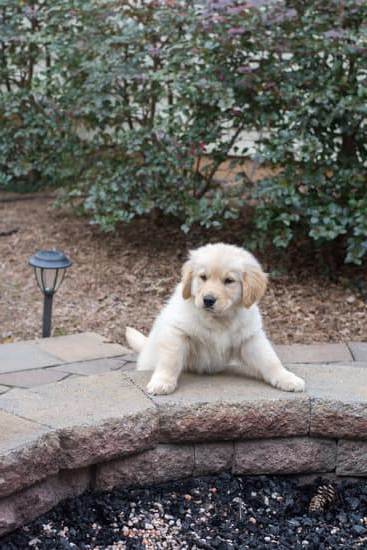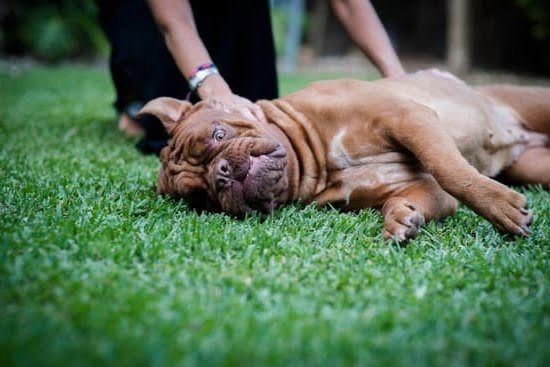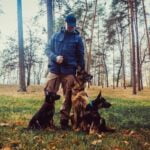Scent training is an essential skill for many working dogs, such as search and rescue dogs, police K9 units, and even everyday pet dogs. But how do you train a dog to scent? In this article, we will delve into the world of scent training, offering insights into its purpose and benefits, as well as practical tips for getting started and advancing in this specialized training.
Scent training goes beyond just teaching a dog to follow its nose. It provides mental stimulation, builds confidence, and enhances the bond between handler and canine. By honing a dog’s olfactory abilities, they can become invaluable assets in various fields, using their keen sense of smell to locate missing persons, detect drugs or explosives, or simply engage in fun activities like scent games.
In the following sections, we will explore the process of selecting the right breed for scent work and establishing a strong foundation in basic commands. We will also discuss the use of specific tools and equipment for scent training and provide guidance for creating realistic scenarios to practice scent work.
Moreover, we will address advanced skills such as tracking and searching in various environments. Whether you are interested in pursuing professional opportunities with your dog or simply want to engage in an enriching activity together, understanding the fundamentals of scent training is essential.
Choosing the Right Dog for Scent Training
When it comes to scent training, choosing the right dog for the job is essential. Not all dogs are created equal when it comes to their sense of smell and their ability to focus on scent work. Certain breeds are naturally more inclined towards scent training due to their characteristics and instincts.
Understanding Breed Characteristics
Different breeds have been selectively bred for specific purposes over many generations, resulting in varying levels of scenting abilities. For example, hound breeds such as Bloodhounds and Beagles are known for their exceptional sense of smell and tracking abilities. Sporting breeds like Labradors and Spaniels also excel in this type of work due to their keen noses and high energy levels. Understanding the breed characteristics and instincts is crucial when selecting a dog for scent training.
Selecting the Right Individual
While certain breeds are generally well-suited for scent work, it’s important to remember that individual temperament and personality play a significant role in a dog’s success in training. Look for a dog that displays enthusiasm, focus, and determination when following scents or searching for objects. Additionally, a good candidate for scent training should have a strong desire to work with their handler and possess a reliable recall.
Adopting Rescue or Mixed-Breed Dogs
It’s worth noting that mixed-breed dogs or those from rescue organizations can also excel in scent training. While they may not possess the specific breed characteristics of purebred working dogs, many mixed-breed or rescue dogs have demonstrated impressive abilities in scent work. Their loyalty, intelligence, and eagerness to learn make them valuable candidates for scent training programs.
Getting Started
Scent training is a fun and rewarding activity that allows dogs to use their natural abilities to sniff out specific scents. Whether you’re interested in training your dog for search and rescue, tracking, or just for mental stimulation, getting started with basic commands and foundation training is essential.
When beginning scent training with your dog, it’s important to start with the basics. This includes teaching them simple commands such as “sit,” “stay,” “come,” and “heel.” These commands will form the foundation for more advanced scent work, as they are crucial for maintaining control and focus during scent detection exercises.
To effectively train a dog to scent, it’s also important to establish a strong bond and communication with your furry friend. Positive reinforcement techniques such as using treats, praise, and toys can help motivate your dog during training sessions. Consistency and patience are key when teaching basic commands and building the foundation for scent work.
Here are some basic commands and foundation training tips to get you started:
- Teach your dog to focus on you by using their name or a specific attention cue.
- Practice leash walking with proper manners such as loose leash walking and paying attention to cues.
- Introduce simple search games at home using treats or toys to encourage your dog’s natural instincts to sniff out objects.
By laying the groundwork with these basic commands and foundation training exercises, you can set the stage for successful scent training with your canine companion. Remember that every dog learns at their own pace, so be patient and consistent in your approach.
Developing the Scent Skills
When developing the scent skills of a dog, it is crucial to introduce scent recognition and discrimination. This is an essential part of training as it teaches the dog to identify and differentiate between different scents. Here are some key steps to help train a dog in scent recognition and discrimination:
- Start with a Strong Foundation: Before introducing specific scents, ensure that your dog has a strong understanding of basic commands such as sit, stay, and come. This will provide them with the necessary discipline and focus for scent work.
- Introduce Scented Objects: Begin by introducing your dog to a single scented object, such as a towel or cotton swab with a particular scent. Allow them to sniff the object and associate it with a positive experience, such as receiving treats or praise.
- Expand Scent Discrimination: Once your dog shows proficiency in recognizing the initial scent, gradually introduce additional scents for them to discriminate between. Use distinct scents and continue reinforcing positive associations with each one.
As you progress in training your dog in scent recognition and discrimination, remember to be patient and consistent. It is important to create a positive and rewarding environment for your dog during this process. With time and practice, your furry companion will develop strong scent skills that can be applied to various activities such as tracking, searching, and detection work.
Ultimately, the goal of developing these skills is to harness your dog’s natural ability to detect scents effectively. Whether for recreational activities or professional endeavors, having a well-trained nose can be incredibly beneficial for both you and your canine partner in various real-life scenarios.
Scent Training Tools and Equipment
Harnesses
One essential tool for scent training is a good harness. A harness allows the dog to move freely and comfortably while also providing the handler with better control during scent work. When choosing a harness, it’s important to consider the fit, durability, and whether it allows for easy attachment of a leash and other training tools.
Leashes
In addition to a harness, a suitable leash is crucial for scent training. The leash should be strong enough to handle the dog’s strength but also lightweight for ease of handling. Longer leashes are often used in advanced scent training to allow the dog more freedom to explore and follow scents.
Scented Objects
To train a dog to recognize specific scents, handlers use scented objects such as cotton swabs or fabric strips infused with essential oils or other substances. These scented objects are used in various exercises to teach the dog to associate certain smells with specific actions or commands. The selection of appropriate scents will depend on the type of scent work being pursued, such as tracking, search and rescue, or narcotics detection.
When considering how do you train a dog to scent, understanding and using the right tools and equipment is key to success in this specialized form of canine training. Harnesses, leashes, and scented objects are essential components in creating an environment where dogs can thrive and excel in their olfactory abilities.
Practicing Scent Work
Scent training is an essential skill for many working dogs, including search and rescue dogs, detection dogs, and even some types of hunting dogs. To train a dog to scent, it’s important to practice in real-life scenarios and create challenges that will test the dog’s ability to recognize and follow a specific scent.
This type of training not only develops the dog’s natural abilities but also helps to build a strong bond between the handler and the dog.
One effective way to practice scent work is to set up search games in different environments such as parks, buildings, or forests. By hiding scented objects or treats and encouraging the dog to use their nose to find them, you are reinforcing their natural instinct while also providing mental stimulation. This type of practice can be both fun and rewarding for both the dog and the handler.
Another important aspect of practicing scent work is creating challenges that will test the dog’s ability to discriminate between different scents. This could involve setting up multiple scent trails with only one leading to a reward or introducing distractions in the environment.
These challenges will help develop the dog’s focus and concentration on the specific scent they are being trained to recognize. Additionally, it will also enhance their problem-solving skills, making them more effective in real-life situations.
One key component of successful scent training is consistency. Practicing regularly in various environments and gradually increasing the level of difficulty will help solidify the dog’s skills and ensure that they are prepared for any situation they may encounter in their working role. By continually challenging and encouraging your dog during practice sessions, you will ultimately create a well-rounded scent-trained companion who is ready for any challenge that comes their way.
Advanced Scent Training
When it comes to advanced scent training for dogs, it’s essential to expand their skills beyond basic scent recognition. Advanced training involves teaching your dog to track specific scents over longer distances, search for scents in various environments, and work under different conditions. This level of training is ideal for working dogs, such as search and rescue dogs, detection dogs, and hunting dogs.
One of the key aspects of advanced scent training is tracking. This involves teaching your dog to follow a specific scent trail left behind by a person or animal.
To start this type of training, you can create a simple scent trail using treats or a scented cloth in your backyard or a quiet area with minimal distractions. As your dog becomes more proficient at following the scent trail, you can gradually increase the difficulty by making the trail longer or introducing turns and changes in elevation.
In addition to tracking, advanced scent training also involves teaching your dog how to search for specific scents in various environments. This could include searching for hidden objects or substances in urban settings, rural areas, buildings, vehicles, or other challenging locations. By exposing your dog to different environments during training sessions, you can help them become more adept at finding scents in real-world scenarios.
| Advanced Scent Training Skills | Training Tips |
|---|---|
| Tracking | Create complex scent trails to challenge your dog’s tracking abilities. |
| Searching | Expose your dog to various environments during training sessions to improve their searching skills. |
Troubleshooting and Problem-Solving
Training a dog to scent can be an incredibly rewarding experience, but it also comes with its own set of challenges. Troubleshooting and problem-solving are crucial aspects of overcoming these challenges in scent training. Whether you’re working on tracking, searching, or other scent-related activities, it’s important to be prepared for potential difficulties along the way.
One common challenge that handlers encounter is when their dog becomes easily distracted during scent training exercises. This can be frustrating, but it’s important to remember that dogs are naturally curious and can be easily drawn to other scents in the environment. One way to overcome this challenge is to gradually increase the level of distractions during training sessions, using positive reinforcement techniques to help your dog stay focused on the intended scent.
Another common issue in scent training is when a dog shows reluctance or fear towards certain scents or environments. This can be due to a variety of factors, including past experiences or lack of exposure. To address this challenge, it’s important to take a patient and gradual approach, slowly introducing your dog to new scents and environments while providing plenty of positive reinforcement and rewards for their bravery.
It’s also not uncommon for handlers to encounter difficulties in effectively communicating with their dog during scent training. Clear and consistent communication is essential in any type of dog training, and scent work is no exception. Utilizing hand signals, verbal cues, and body language can all play a role in improving communication between handler and dog during scent training exercises.
| Challenge | How to Overcome |
|---|---|
| Distracted Dog | Gradually increase distractions while using positive reinforcement techniques |
| Reluctance/Fear towards Scents or Environments | Take a patient and gradual approach while providing positive reinforcement |
| Communication Issues | Utilize hand signals, verbal cues, and body language for clear communication |
The Bond Between Handler and Dog
Scent training is not just about teaching a dog to recognize and follow a specific scent, but it also strengthens the bond between the handler and their furry companion. Building trust and communication is essential in scent work, as it requires the dog to rely on their handler for guidance and support. The partnership between the handler and dog is crucial in successful scent training, as they must work together to overcome challenges and achieve their goals.
To build trust in scent work, it is important for the handler to establish a strong foundation of basic obedience training with their dog. This includes commands such as sit, stay, come, and heel, which are essential for effective communication during scent work. Consistent and positive reinforcement during training sessions will help create a sense of trust and understanding between the handler and their dog.
Communication in scent work goes beyond verbal cues; it also involves reading body language and understanding the dog’s natural behavior. Handlers must learn to observe their dog’s reactions to different scents and environments, as well as recognize subtle indicators of when their dog has detected a specific scent. By honing this ability to communicate non-verbally with their canine partner, handlers can enhance their teamwork in scent training.
Ultimately, the bond between handler and dog in scent work is strengthened through countless hours of practice, patience, and mutual respect. It is a journey that requires dedication from both parties but results in a deeply rewarding partnership based on trust, communication, and shared accomplishments. How do you train a dog to scent without building this strong bond between handler and canine?
Conclusion
In conclusion, scent training is a rewarding and fulfilling activity for both dogs and their handlers. Through the process of understanding the purpose and benefits of scent training, choosing the right dog with suitable characteristics, and laying a solid foundation with basic commands, handlers can set their canine companions up for success in the world of scent work.
As the journey in scent training progresses, both dog and handler will undoubtedly encounter challenges. However, by utilizing troubleshooting techniques and problem-solving skills, these hurdles can be overcome, leading to an even stronger bond between the two. The trust and communication developed during scent work not only enhance the training experience but also deepen the relationship between handler and dog.
Ultimately, scent training allows dogs to utilize their natural abilities while providing mental stimulation and physical exercise. It is a journey filled with achievements to celebrate as teams progress from basic scent recognition to advanced tracking and searching in various environments. As handlers continue on this journey with their canine partners, they will truly witness how do you train a dog to scent into a valuable skill that benefits both them and their four-legged companions.
Frequently Asked Questions
How Do I Train My Dog to Smell?
Training a dog to smell begins with basic obedience training and then progresses to scent-specific exercises. Start by teaching your dog to focus on a specific scent, and then gradually increase the complexity of the exercises.
How Do You Teach a Dog to Indicate on a Scent?
Teaching a dog to indicate on a scent involves using positive reinforcement techniques such as treats and praise. Begin by associating the target scent with a reward, and gradually shape the behavior until the dog reliably indicates on the scent.
What Is the Best Scent Training for Dogs?
The best scent training for dogs often involves using natural scents such as essential oils or fresh herbs. There are also commercially available scent training kits specifically designed for dogs, which can be helpful for beginners. Additionally, enlisting the help of professional trainers experienced in scent work can provide valuable guidance for effective scent training.

Welcome to the blog! I am a professional dog trainer and have been working with dogs for many years. In this blog, I will be discussing various topics related to dog training, including tips, tricks, and advice. I hope you find this information helpful and informative. Thanks for reading!





